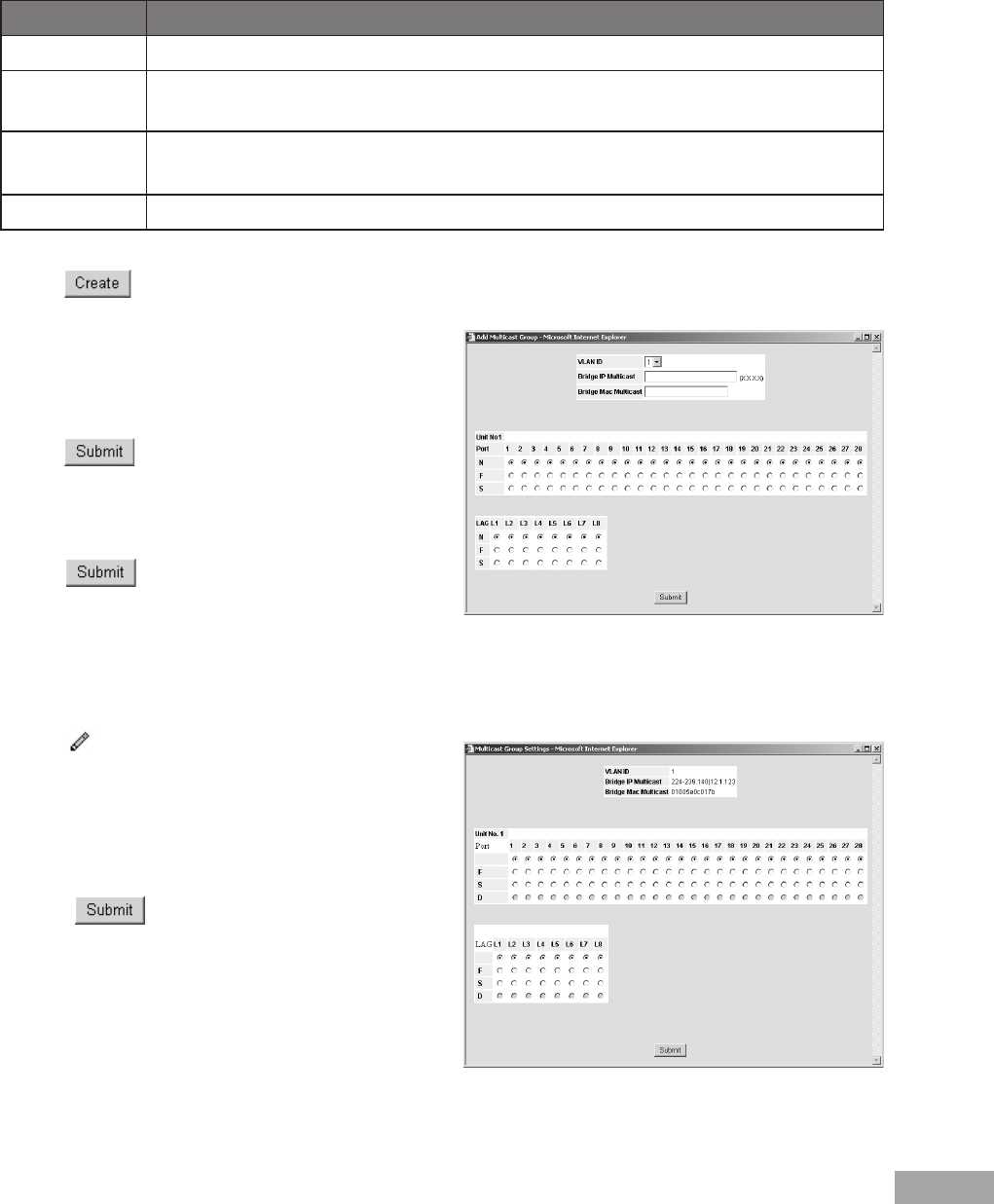
68
69
Bridge Multicast Address — Identies the Multicast group MAC address/IP address.
Port — Displays the port that can be added to a Multicast service.
LAG — Displays the LAG that can be added to a Multicast service.
The following table contains the IGMP port and LAG members management settings:
Table 5: IGMP Port/LAG Members Table Control Settings
Port Control Denition
D Dynamically joins ports/LAG to the Multicast group in the Current Row.
S
Attaches the port to the Multicast group as static member in the Static Row.The port/LAG has joined
the Multicast group statically in the Current Row.
F
Forbidden ports are not included the Multicast group, even if IGMP snooping designated the port to
join a Multicast group.
Blank The port is not attached to a Multicast group.
2. Click . The Add Multicast Group Page opens:
Figure 97: Add Multicast Group Page
3. Dene the VLAN ID, Bridge Multicast IP Address, and
Bridge Multicast MAC Address elds.
4. Click .
5. In the Multicast Group Page, select ports to join the
Multicast group.
6. Dene the Multicast port settings.
7. Click . The Multicast group is dened, and the
device is updated.
To modify the Multicast group settings:
1. Click System > Bridging Cong > Multicast Support > Bridge Multicast > Multicast Group. The Multicast Group
Page opens.
2. Click . The Multicast Group Settings Page opens:
Figure 98: Multicast Group Settings Page
3. Select Ports/LAGs for the selected VLAN and dene
the port settings.
4. Click . The Multicast group settings are
modied and device information is updated.


















